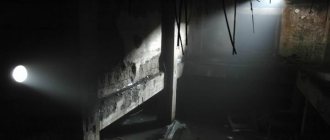Self-rescuers are specialized devices for independently providing a person with air in conditions where normal breathing becomes impossible. They play a critical role in various applications such as firefighting, chemical industry, mine emergencies and other extreme conditions. In this article we will look at what self-rescuers are, how they work and where they are used.
Principle of Operation of Self-Rescuers
The main goal of self-rescuers is to provide a person with clean air to breathe in conditions where the environment becomes dangerous due to fire, gas emissions, smoke or other harmful substances. They work according to the following principle:
Air filtration: The self-rescuer is equipped with filters capable of trapping particles of solids and gases that may be harmful or products of combustion.
Air Supply: Clean air is supplied by an air mask or respirator to the user, who can breathe it without inhaling harmful substances in the environment.
Independence: Self-rescuers allow a person to remain independent and move in a dangerous area while still allowing them to breathe for a limited time.
Application Areas of Self-Rescuers
Firefighting: Self-rescuers are used by firefighters to enter burning buildings and evacuate people. They provide access to air in conditions of thick smoke and high temperatures.
Chemical and Nuclear Industries: In these industries, self-rescuers are needed to protect workers from chemical releases and radiation leaks.
Mines and underground work: Workers engaged in mine and underground work can use self-rescuers to provide access to air in the event of an emergency.
Emergencies: In the event of emergencies, such as chemical transport accidents or hazardous substance spills, self-rescuers help save lives and prevent poisonings.
Types of Self-Rescuers
There are several types of self-rescuers, including the following:
Full Face Masks: These self-rescuers provide full face and eye protection and are most common among firefighters.
Half masks: These cover only the nose and mouth, leaving the eyes exposed. Suitable for a wide range of applications.
Respirators: Most often used in light conditions such as smoke and dust, but can also be equipped with filters to protect against gases.
Conclusion
Self-rescuers play an important role in ensuring safety in extreme conditions. They allow people to breathe in harmful substances, giving them a chance to escape and survive. Working with self-rescuers requires training and training to properly use them in critical situations.











